27 Italian Food Rules To Follow To Eat Like A Local
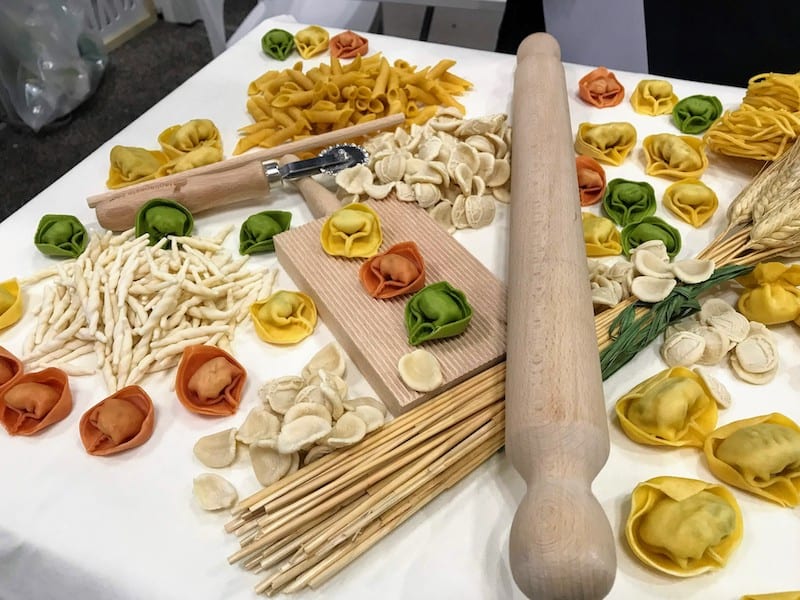
When in Rome…
Or for that matter, wherever you travel in Italy or anywhere elsewhere in the world, you’ll find that locals have different customs and traditions than your own. Experiencing different cultures is one of the allures of travel.
But because Italy is so food-centric, rules about what and how to eat have been ingrained for generations. Of course, food rules vary among regions (The country was only unified to become Italy as we know it today in 1861). For example, even the types of pasta and breads consumed in different parts of the country vary from place to place.
Italian food rules are always somewhat of a generalization because they aren’t written in law and aren’t observed by everyone. But if you want to eat like a local, here are some rules to follow:
Italian Food Rules to Follow
Food Rule #1 – Don’t eat fish with cheese
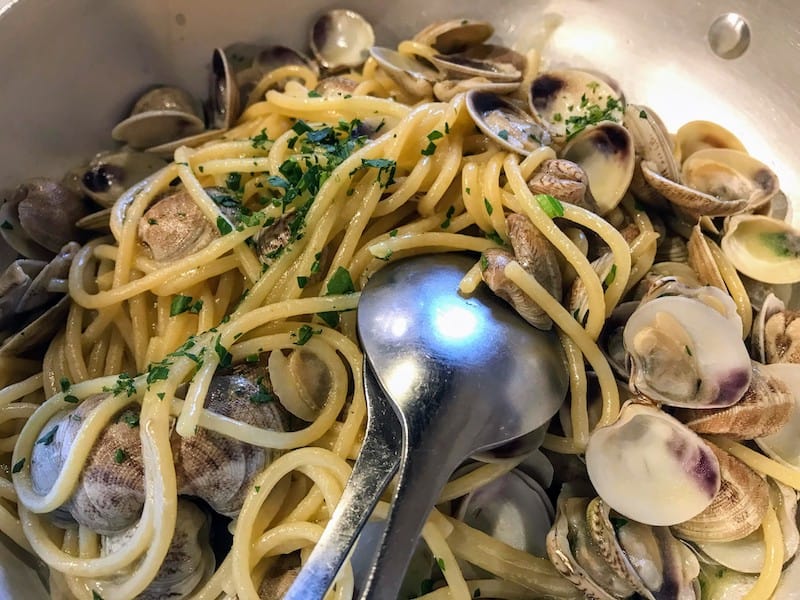
While grated cheese works well atop most pasta dishes, don’t even think of asking for grated cheese on top of your seafood pasta. Cheese doesn’t go with fish.
The reasoning? Fish is delicate and cheese is strong, which obscures the flavor of the fish, cookbook author Julia della Croce, an expert on Italian cuisine told AtlasObscura.com.
“Don’t ask for extra cheese unless the server mentions it,” advises The Daily Meal. Unless asked, leave it to the chef and server to decide which dishes call for cheese and how much.
Food Rule #2 – Cappuccino is only a breakfast drink
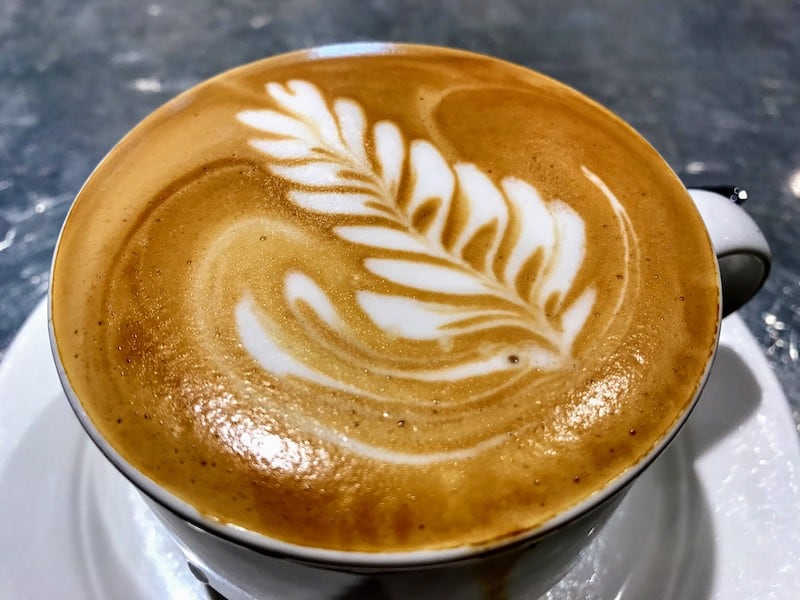
Most Italians won’t drink cappuccino, considered a breakfast drink, after 10 AM. If someone is jetlagged or woke up late—perhaps, they’ll stretch the window until noon.
But ordering a cappuccino after that, and particularly after dinner, is simply cringe-worthy. Italians believe the rich foamy milk of the drink interferes with digestion. Of course, it’s never consumed with lunch or dinner either.
While we are on the subject of coffee, the protocol at most bars is to pay ahead at the cash register and get a receipt, then hand the receipt to the person at the bar while you place your order. Most Italians prefer to sip their morning drink at the counter because it is less expensive than taking it to a table.
Food Rule #3 – Pasta is usually a first course, not a main dish or a side dish
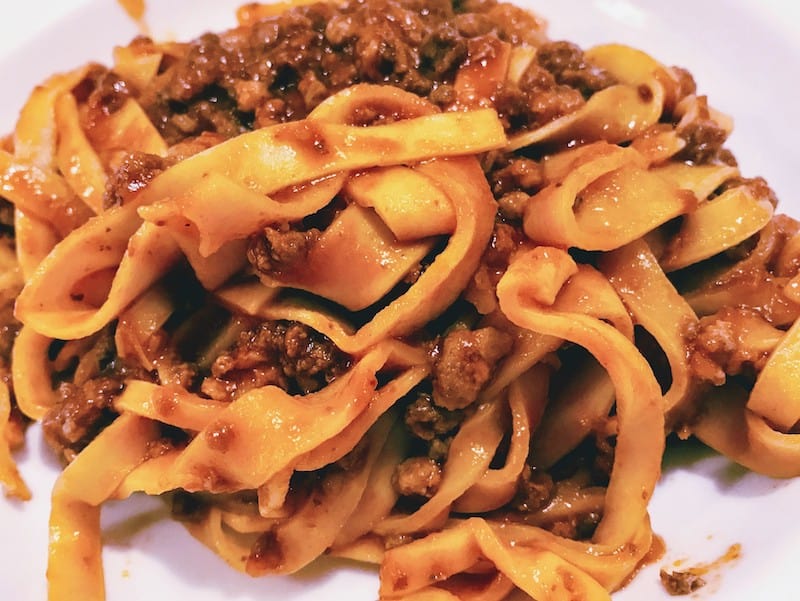
Italians categorize dishes into two courses, a primo (first course) and secondo (second course). Different types of pasta with sauces are often served as a first course. (Second courses are typically meat, fish or poultry.)
At lunchtime, pasta is often eaten as a main dish. Lunch portions of pasta tend to be heartier than those served as first courses at dinner.
Food Rule #4 – Pasta isn’t eaten with bread
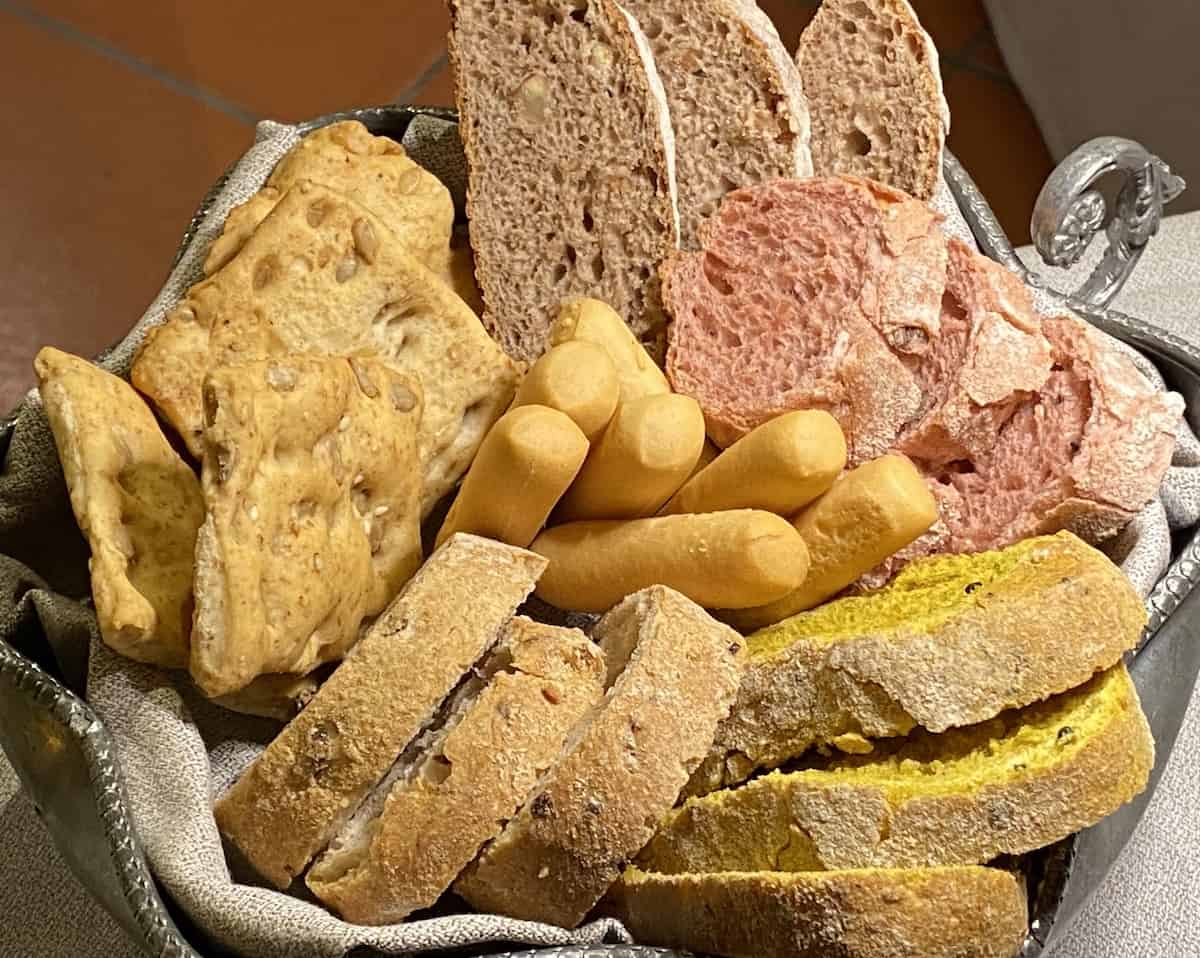
Even if a tempting bread basket is sitting in front of you, Italians don’t eat bread with pasta.
“Pasta is a starch, so do not eat bread (a starch) with pasta (another starch.),” says food writer Elizabeth Minchilli.
Why is it there? You can eat that bread with a non-pasta first course or with a second course.
While it might seem gauche in France, many Italians also use bread to clean the sauce off their plate when they’ve finished the dish. This Italian food custom is called “fare la scarpetta.”
Some chefs view it as a sign that you really loved your dish but you may want to skip cleaning your plate at a fancy meal or at fine dining restaurants.
Food Rule #5 – Spaghetti isn’t eaten with meatballs (A corollary of the above)
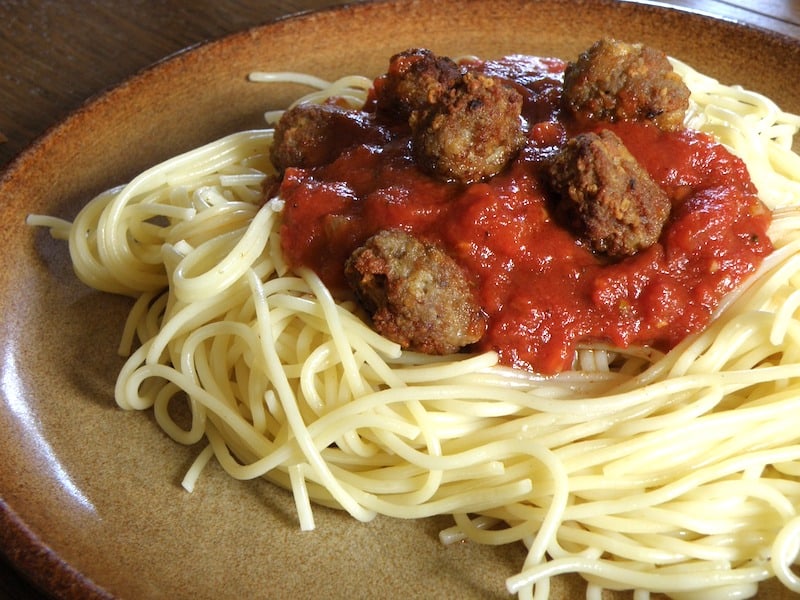
While a dish of spaghetti and meatballs is an Italian-American favorite, most Italians living in the homeland eat their pasta as a primo and enjoy their meatballs (polpette) as a secondo.
Writing in Smithsonian.com, Shaylyn Esposito suggests that one reason spaghetti got coupled with meatballs was that Americans were used to having a starch with their meal. Another Italian food fact: Italians don’t eat pasta and meat off the same plate.
However, you will often find polpette (which tend to be more diminutive in size than Italian-American meatballs) served with a touch of sauce as an appetizer during aperitivo time, especially in the south.
Food Rule #6 – Don’t use a knife to cut spaghetti or break spaghetti in half before boiling it
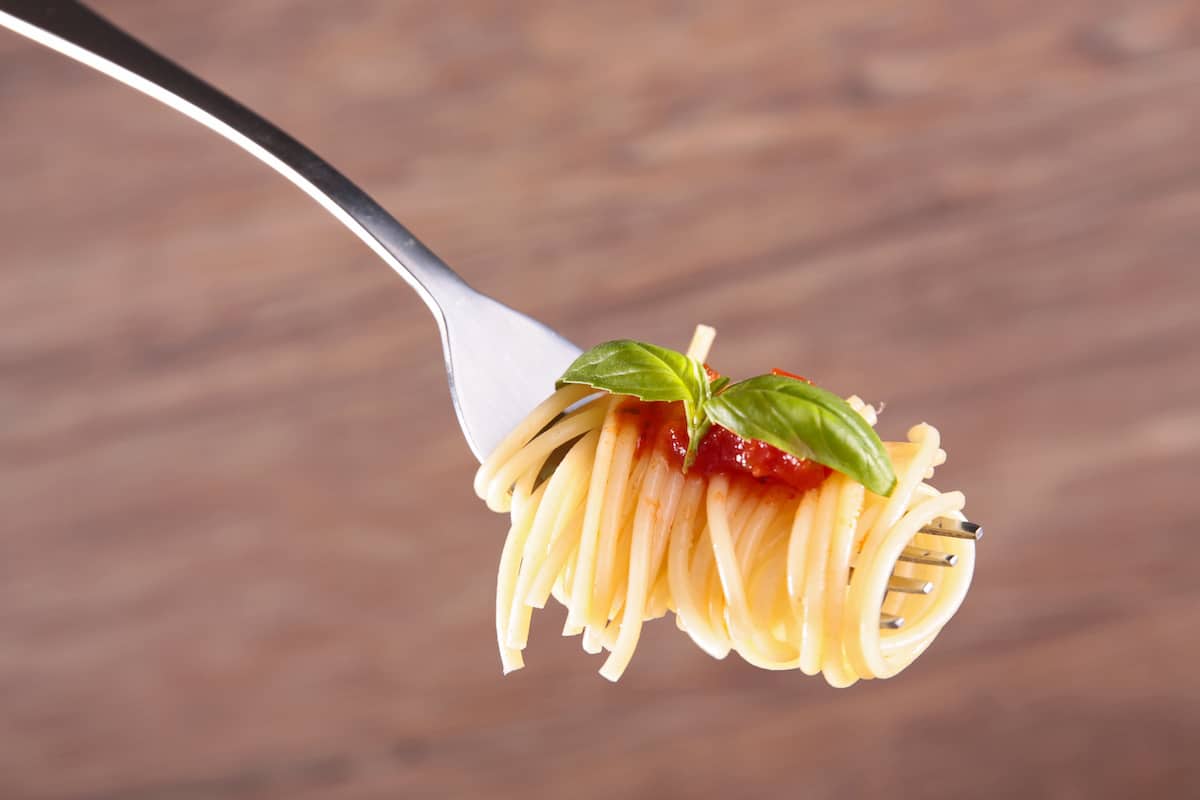
As you might presume by now, Italians are serious about the ways in which pasta should be prepared and consumed. While it isn’t illegal to cut spaghetti with a knife (as often asked) or to break it in half for cooking, it isn’t acceptable to do either. In fact, spaghetti is easier to eat when you twirl the long strands around your fork.
If you need help doing that, your plate is the preferred “assist” as opposed to a soup spoon. In fact, a survey by YouGov listed using a knife on pasta as one of the top “crimes” committed against Italian cuisine.
Food Rule #7 – Eggs aren’t eaten for breakfast

Just because eggs are often served on breakfast buffets at Italian hotels, don’t be misled. Italians don’t eat eggs for breakfast. They’re considered too filling so early in the morning.
An Italian breakfast is generally simple and quick, usually a hot coffee-based drink with a sweet pastry, croissant or roll, or slice of bread with jam. Italians are more likely to eat eggs for lunch, sometimes in the form of a frittata.
Those scrumptious hotel buffet menus are geared to please international travelers rather than Italians.
Food Rule # 8 – Never use a spoon to roll pasta
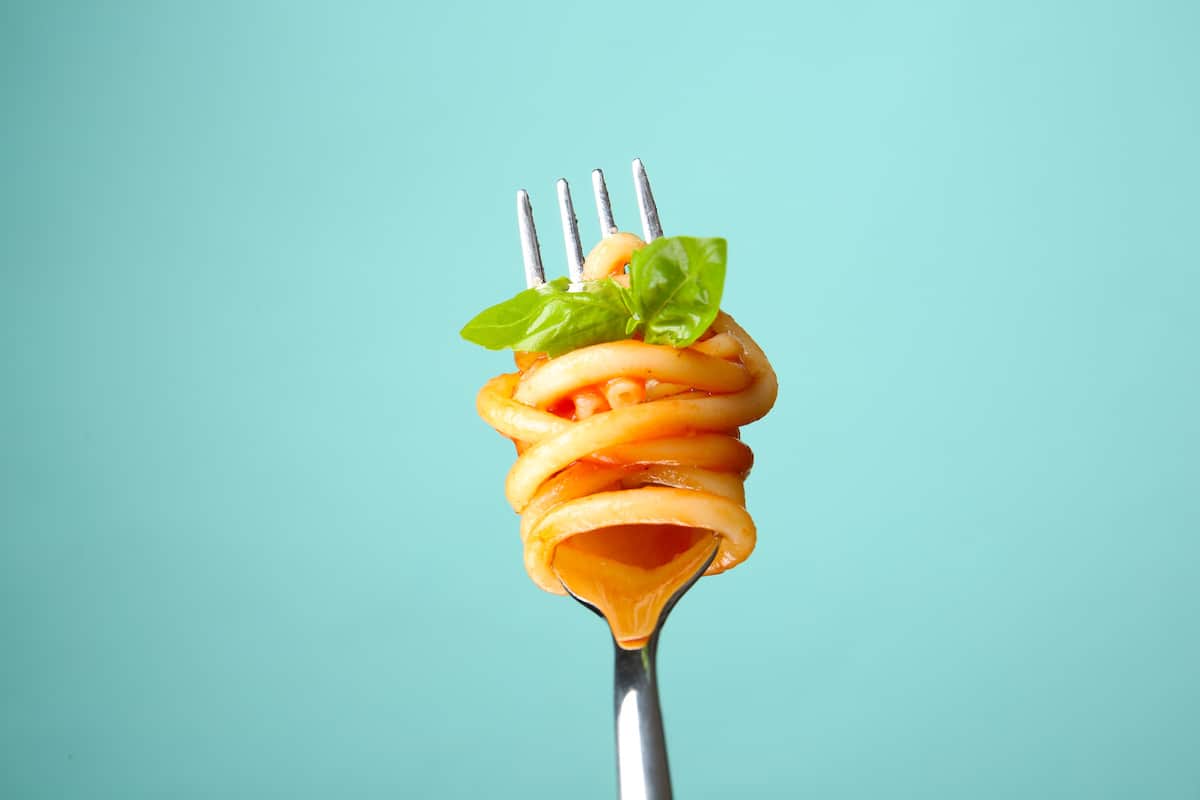
In Italy, you’ll often find a spoon at your place setting. It’s used for soups, creamy dishes or ones with a lot of sauce. But never use a spoon to roll the pasta around your fork. Instead, use your plate for a solid surface to roll pasta with long strands like spaghetti, linguini, bucatini, or tagliatelle.
Another cooking corollary: Never rinse pasta when cooking it. The starch in the water helps thicken your sauce and bind it to the pasta. The exception for rinsing pasta is when your using the pasta in a cold salad.
Food Rule #9 – Don’t eat risotto with a spoon

Like pasta, risotto is eaten with a fork rather than a spoon.
Risotto recipes vary across Italy but because it is such a hearty dish, it is especially popular in the north. But every region has its own take on this classic, adding different local ingredients. Wherever you travel from north to south, you would be remiss not to order a plate of creamy risotto (my favorite is risotto with porcini mushrooms and shaved white truffles on top.)
Because risotto is heavy, it is often ordered as a secondo rather than a first course (prima) or as a side. One exception is that it is commonly served as a side dish with ossobuco (braised veal shanks).
See my post on the different courses of an Italian meal and on ordering food in Italy.
Food Rule # 10 – Don’t count on having a very late lunch
A tourist’s schedule each day can be unpredictable because they may find that they have to wait in long queues at attractions or that getting from place to place takes longer for someone who isn’t native to a destination.
But if you don’t plan for lunch, it may not happen. Most restaurants, except very informal ones, maintain strict opening hours for lunch and dinner and aren’t open throughout the day.
Lunch is generally served between 12:30 and 2:30. Because everyone is eating during these two hours (both visitors and locals), restaurants can be crowded. It’s always best to arrive early or to make a reservation ahead of time to be assured of getting a table.
Food Rule #11 – Dinners aren’t eaten before 7 PM
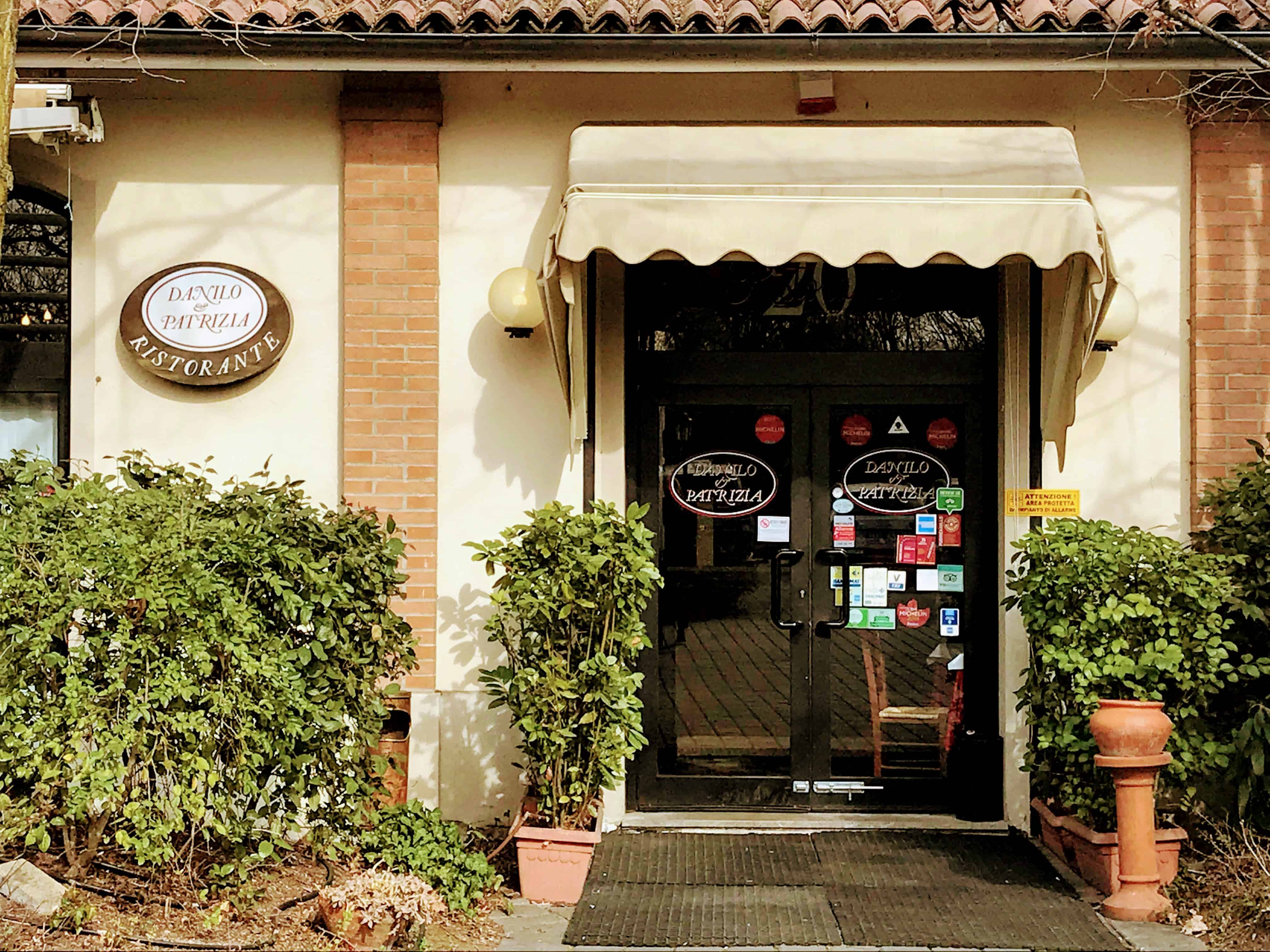
When is dinner time in Italy? Italians tend to eat later than Americans, usually about 8 PM or after.
In fact, if you are visiting Italy, you aren’t likely to find a restaurant open for dinner before 7 PM so count on dinner time in Italy being after that, whether you are eating at someone’s home or at a restaurant.
Food Rule #12 – Don’t ask for salad dressing

While Americans are used to a variety of salad dressings, Italians don’t use bottled dressings. There’s no such thing as Italian dressing or Caesar dressing in Italy. (The origins of the latter are said to be in Tijuana, where an Italian-American restaurateur created Caesar salad.)
Italians typically dress salads with olive oil alone or with oil and vinegar (often balsamic). Of course, the best olive oil is always local.
And salad is always served after the first course.
Food Rule #13 – Don’t order soda pop with meals
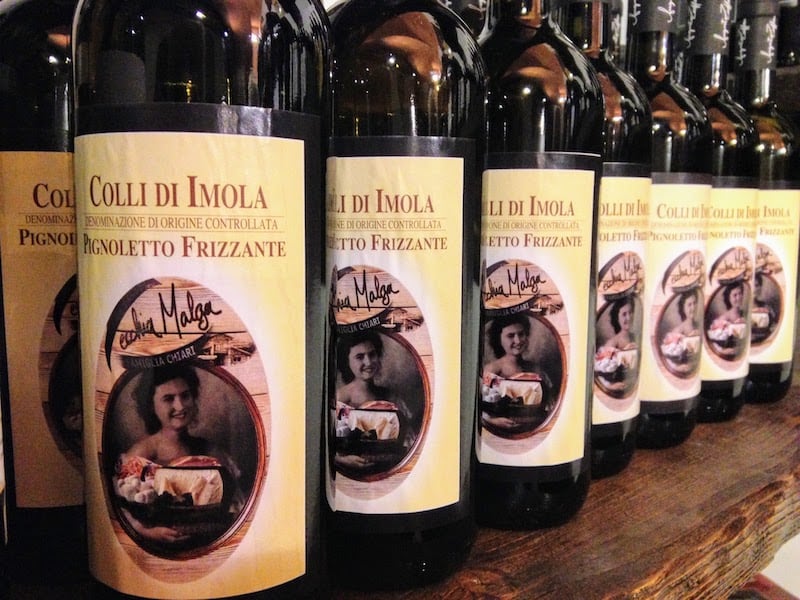
While Coca-Cola and other soft drinks are available in Italy, Italians never order these sugary drinks with their meals.
They always drink wine or water. The reasoning: Soda detracts from the flavor of foods.
Also, Italians never drink coffee with a meal, only afterward. An exception, however, it’s okay to slug soda or beer with pizza.
Food Rule #14 – Don’t ask for tap water at the dinner table
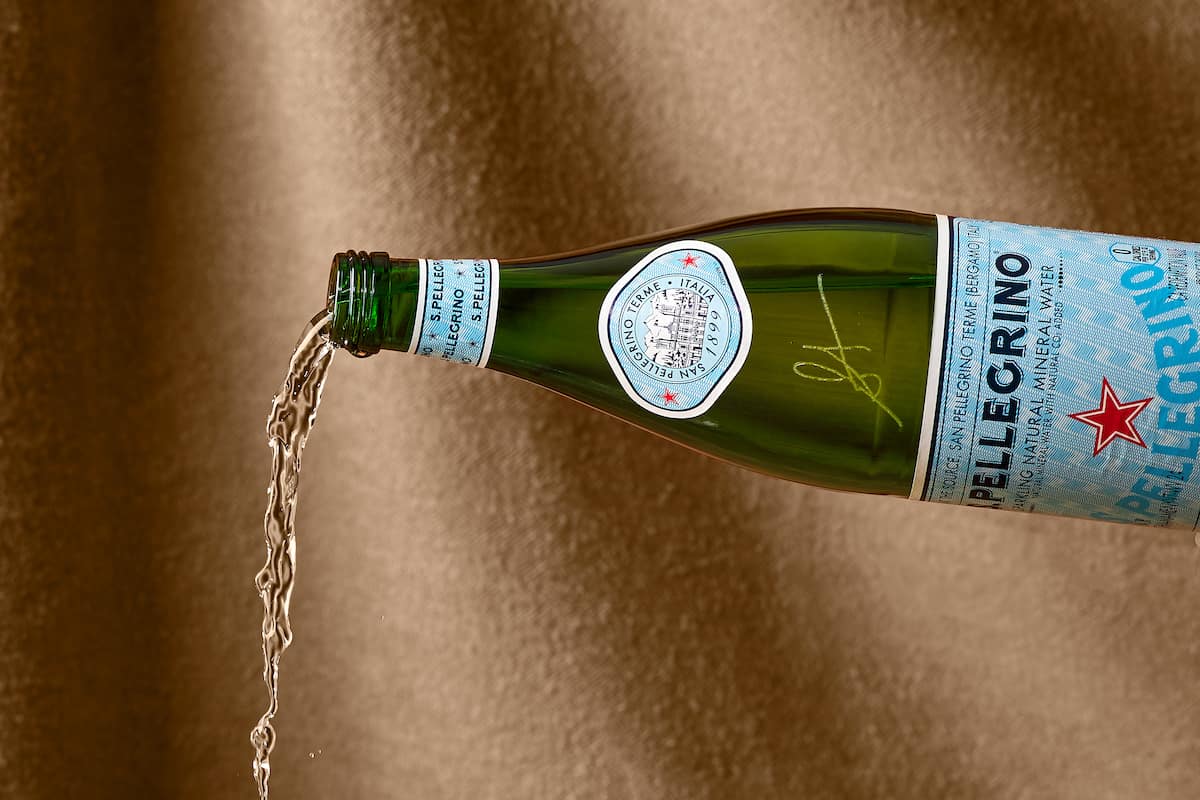
Although it’s usually safe to drink the water in most places in Italy, Italians waiters always ask guests the same question when they sit down at a table—Con gas (frizzante) or senza gas (naturale)?
Mineral water not only tastes better (thus, enhancing the taste of an already delicious meal) but also has some purported health benefits.
And, if one person at the table prefers bubbles and the other doesn’t, it’s proper etiquette to order a bottle (or half-bottle) of each.
Food Rule #15 – Don’t order an Italian-American dish at a restaurant
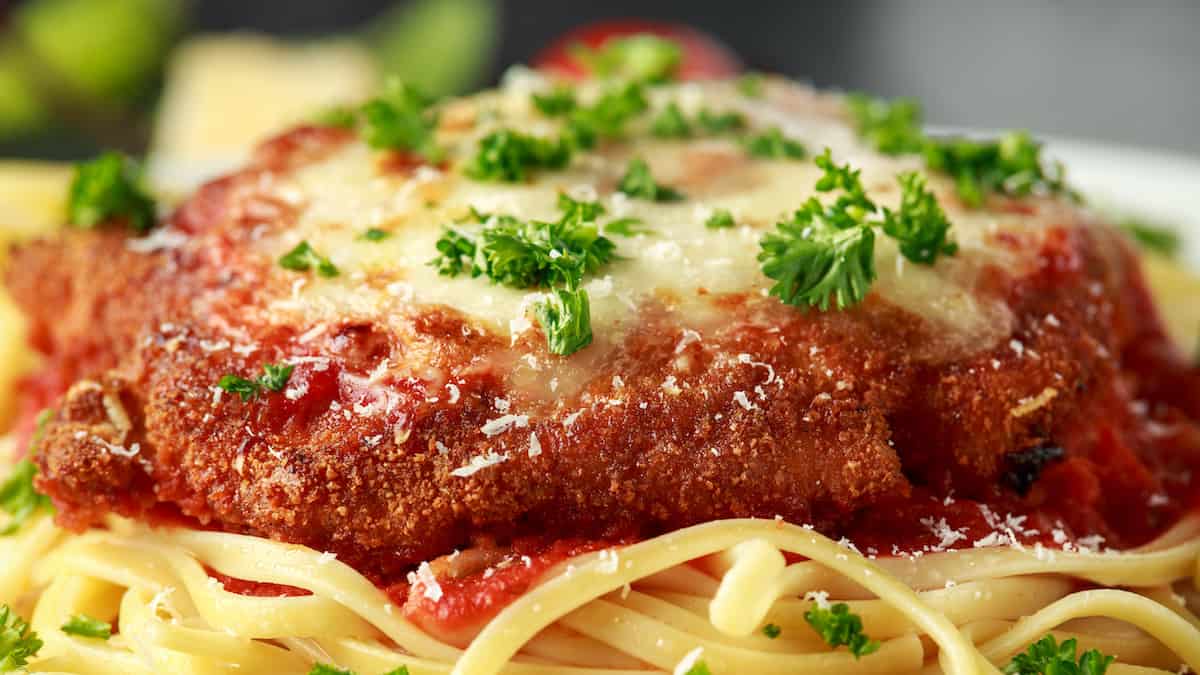
There is nothing objectionable about eating Italian-American dishes when you’re dining in the U.S.
Italian-American foods are a fusion cuisine that occurred when immigrants from Italy adapted their recipes to American ingredients, cooking methods and tastes.
But when in Italy, don’t make the mistake of asking for dishes that aren’t made there. Some examples: Lobster Fra Diavolo, Eggplant Rollatini, Chicken Parmigiana, Manicotti, or Pasta Primavera.
Food Rule #16 – Eat local
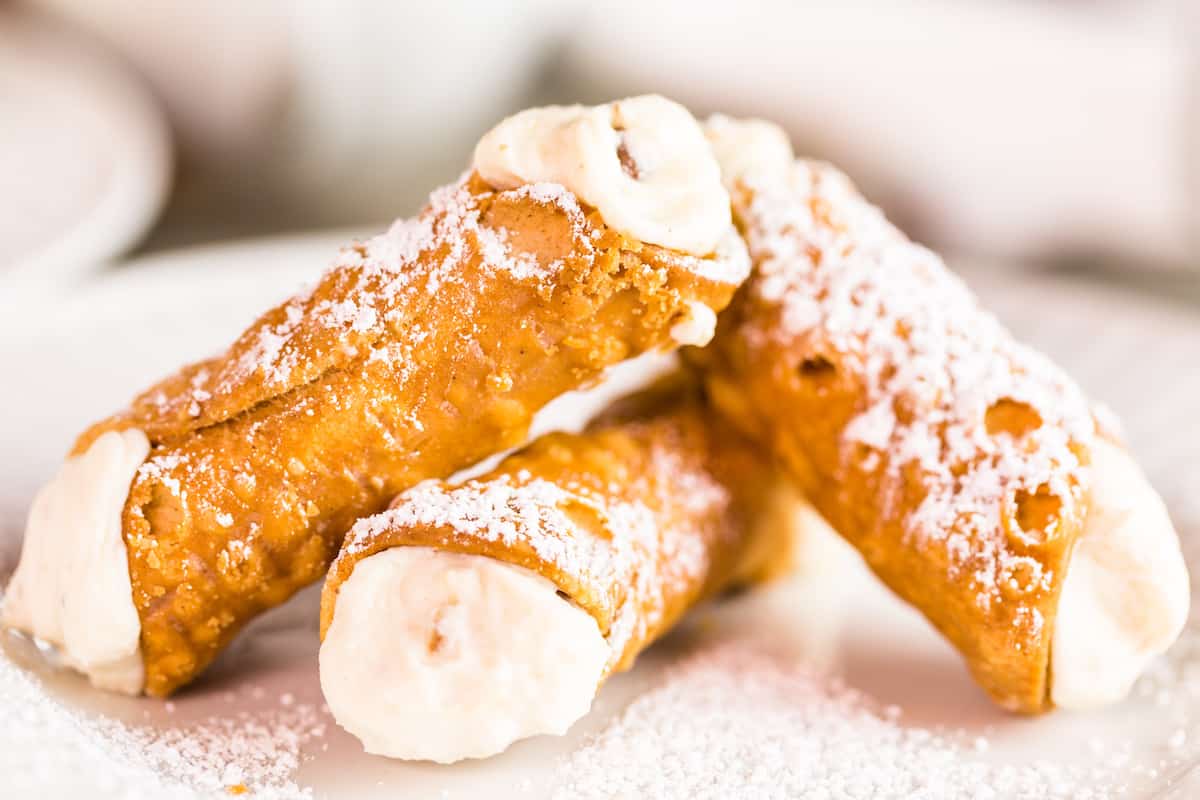
Italy is blessed with regional cuisine that varies from place to place. If you order the specialties of the region, you’ll be able to enjoy some of the best foods and preparations because they are more likely to be local and seasonal, and the recipes are well-honed over generations.
For example, it would be a mistake not to order a dish with pesto in Liguria, or tortellini en brodo in Emilia Romagna, and ricotta-filled cannoli in Sicily.
If you aren’t sure about what to order, trust your waiter to tell you (and it doesn’t hurt to read up before your trip.
Food Rule #17 – Don’t order a glass of wine without food
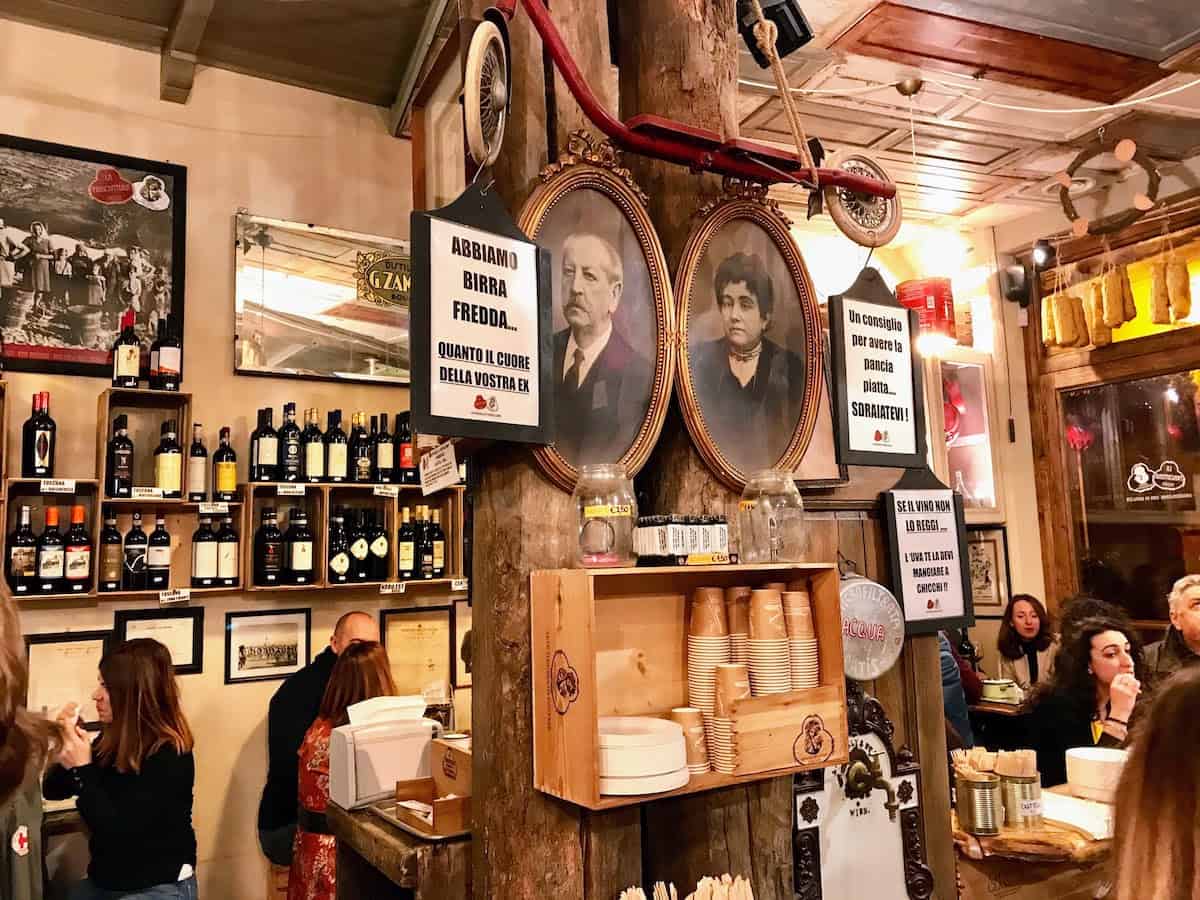
Food and wine are integral elements of Italian culture; they are always consumed together.
So if you are at a bar or restaurant, people will look askance if you only order a glass of wine alone. Always order at least a small dish to consume with your drink.
Food Rule #18 – Don’t even think about a ‘main course”
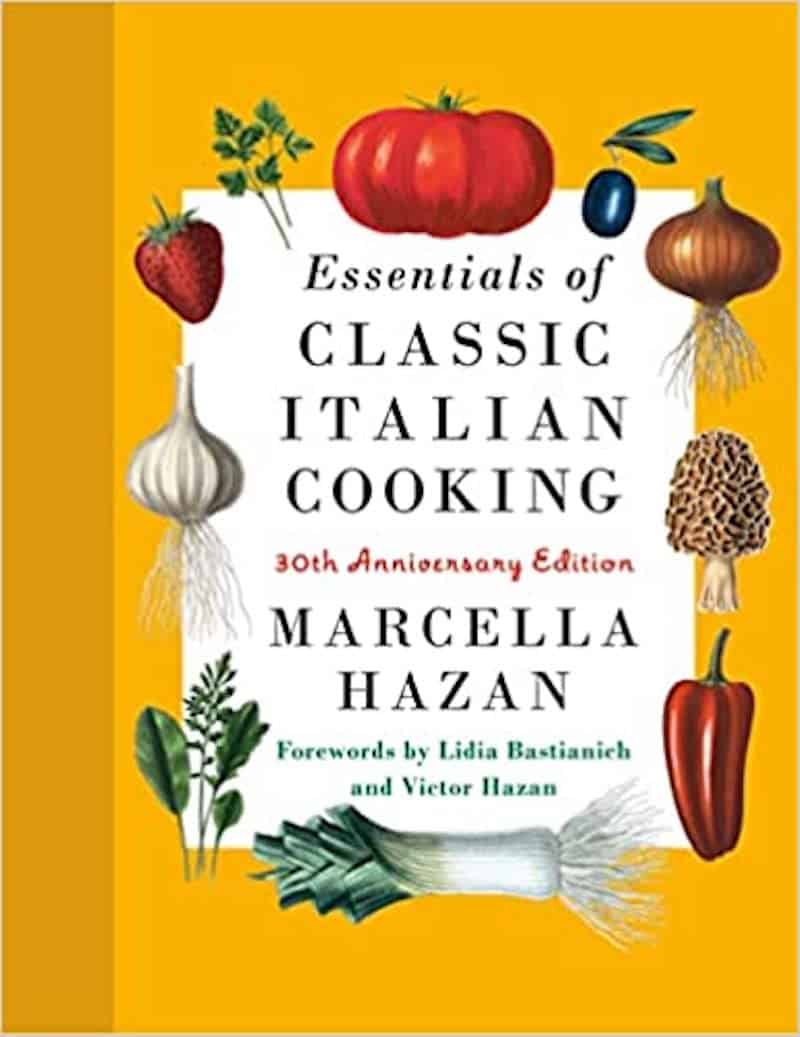
“In an Italian meal, there is no main course,” writes Marcella Hazan in her seminal cookbook, Essentials of Italian Cooking.
Instead, Italians enjoy a succession of small courses, and multiple courses are never served side-by-side (e.g., pasta with meat).
She notes that there are some very rare exceptions to the rule, like Ossobuco e Risotto, a Milanese specialty served as one dish.
Food Rule #19 – Avoid sharing a plate
An individual pizza in Locorotondo, Pugla (credit: Jerome Levine)
While it is common for people to share dishes at many American restaurants, this custom isn’t followed in Italy. One reason why it is far less common is that portions in Italy tend to be more “right-sized.”
One standout example: Pizzas, especially in full-service restaurants in Italy, are smaller and intended for only one person. They aren’t cut into slices and eaten with a knife and fork.
However, like all other Italian food rules, this one has exceptions, too. Writing on Quora, Michael Righi, “The Italian Guy,” notes that platters of cold cuts and cheeses (taglieri), which are very popular in the Emilia Romagna region, are intended to be shared—over wine and conversation, of course.
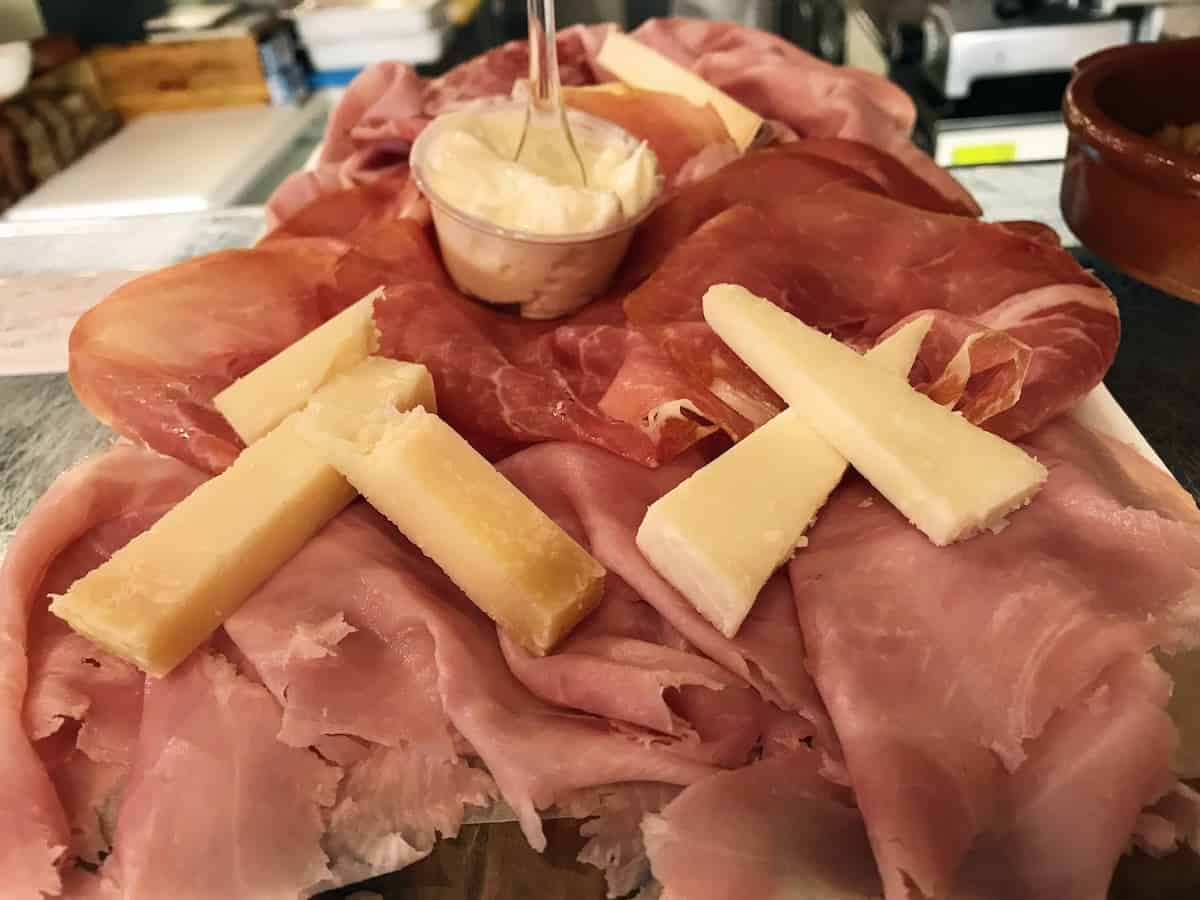
Similarly, some trattorias serve baked pasta casseroles family-style, also meant for sharing at the table. It’s also okay to share desserts in Italy.
If you want to taste more than one type of pasta on the menu or only want to eat a small amount, some restaurants offer a half-portion (mezzo porzione).
Food Rule #20 – Eat your pizza with a fork and knife, sometimes
More on the topic of pizza
Speaking about forks and knives…
Rather than the large multi-person “pizza pies” you find in the U.S., you are likely to find pizza cut and sold in rectangular pieces in Italy (al taglio, by the cut) or as an individual pie intended as a one-person meal. You may even find a delicious pinsa, Roman-style pizza.
Whether or not to use a fork and knife depends on where you eat it. If you are eating at a casual eatery like a pizzeria, you can fold the slice and carefully use your hands to get it to your mouth. However, if you are in a formal setting, tradition dictates eating pizza with a fork and knife.
Food Rule #21 – Peel fresh fruits
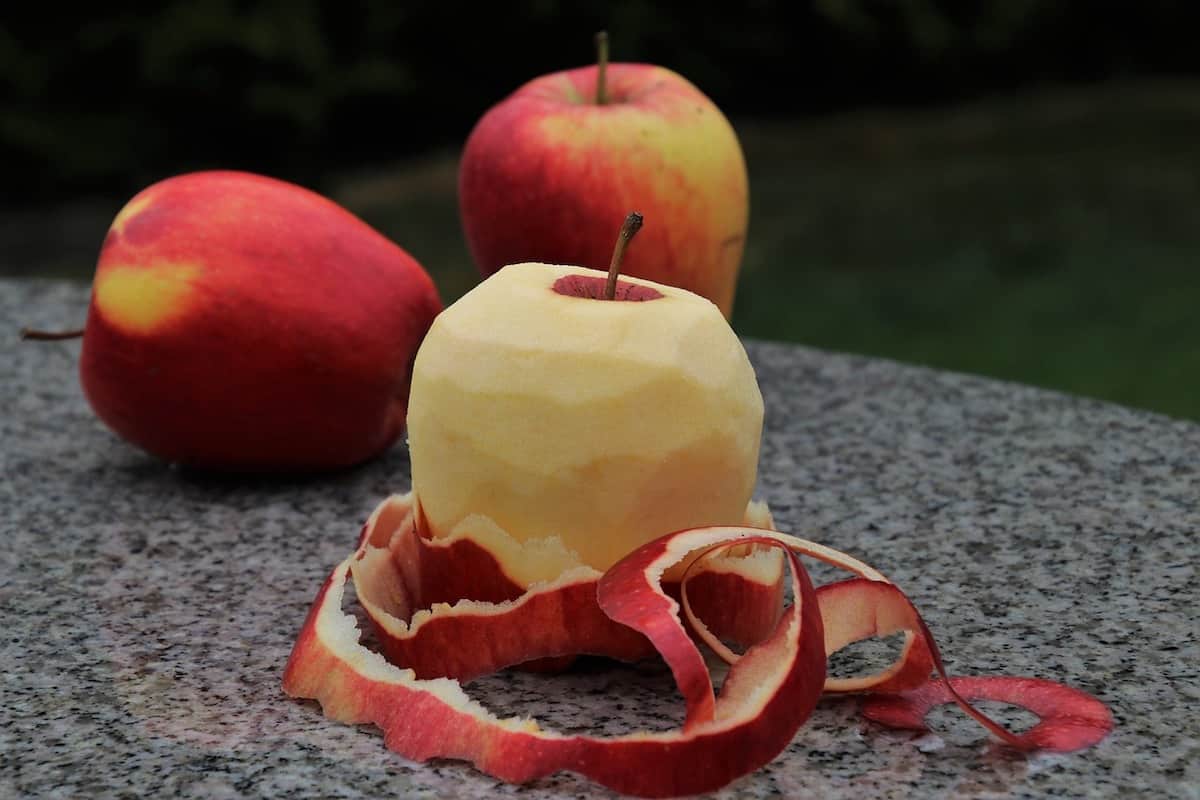
While most Americans don’t think twice about taking a bite of a juicy peach after washing it, Italians do. They are more likely to peel the fruit and eat it with a fork and knife. The same goes for other fresh fruits like pears and apples.
Some attribute the practice to being more fastidious about eliminating possible pesticides but most people chalk it up to another Italian food tradition.
Food Rule # 22 – Don’t make the mistake of ordering Italian American foods
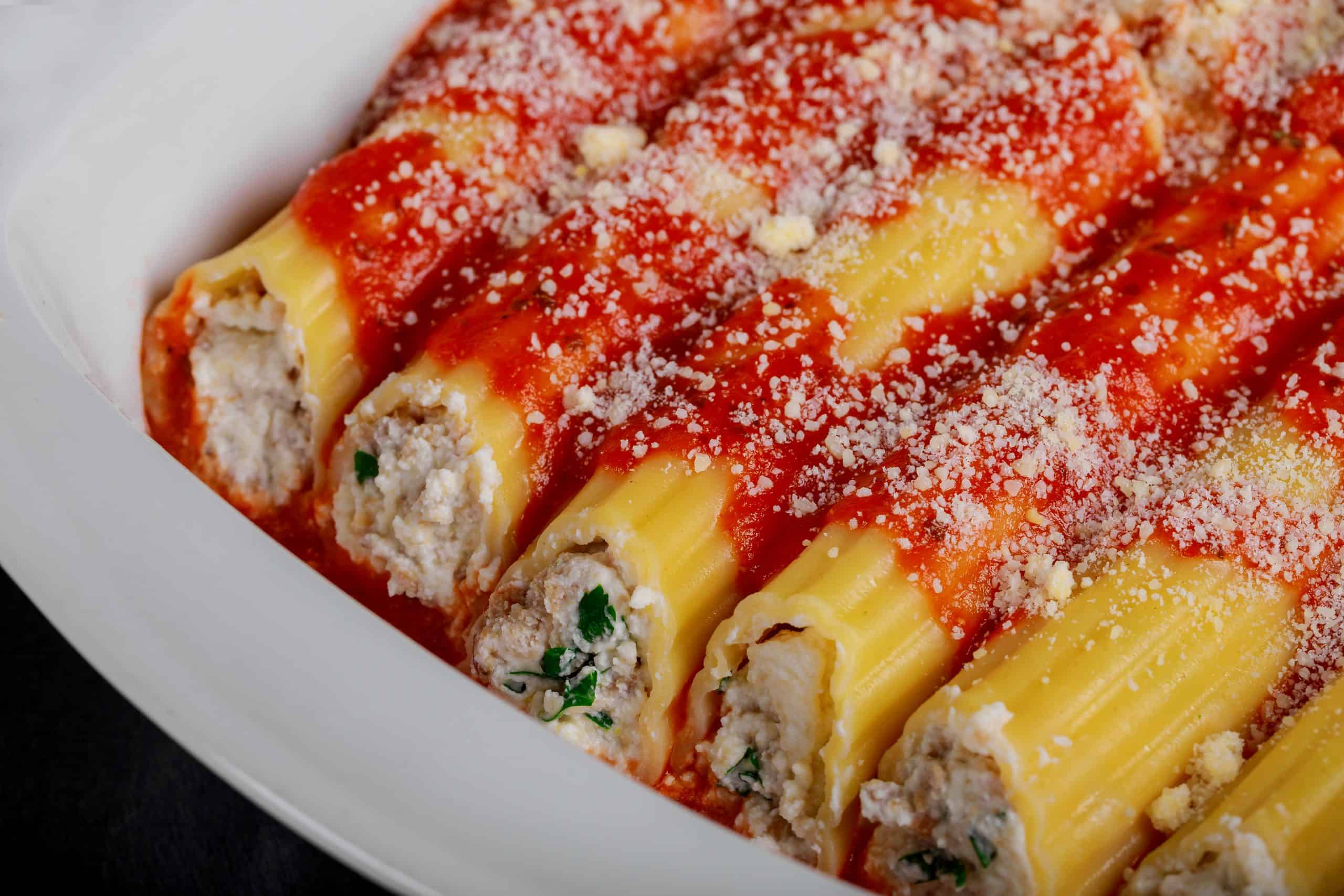
Some dishes that are popular in the U.S. aren’t truly Italian. When Italian immigrants came to America during the diaspora, they often substituted ingredients they couldn’t find here for ones they used at home and used other shortcuts to simplify their cooking.
Some of these Italian-American dishes—that don’t exist in Italy—include Turkey or Chicken Tetrazzini, Eggplant Rollatini, Veal and Chicken Parmigiana, Chicken or Veal Francese, and Manicotti.
If you don’t see your favorites from home on a menu in Italy, don’t even bother asking. Instead, order a dish that is more authentically Italian.
Food Rule #23 – Don’t ask for ketchup in a ristorante
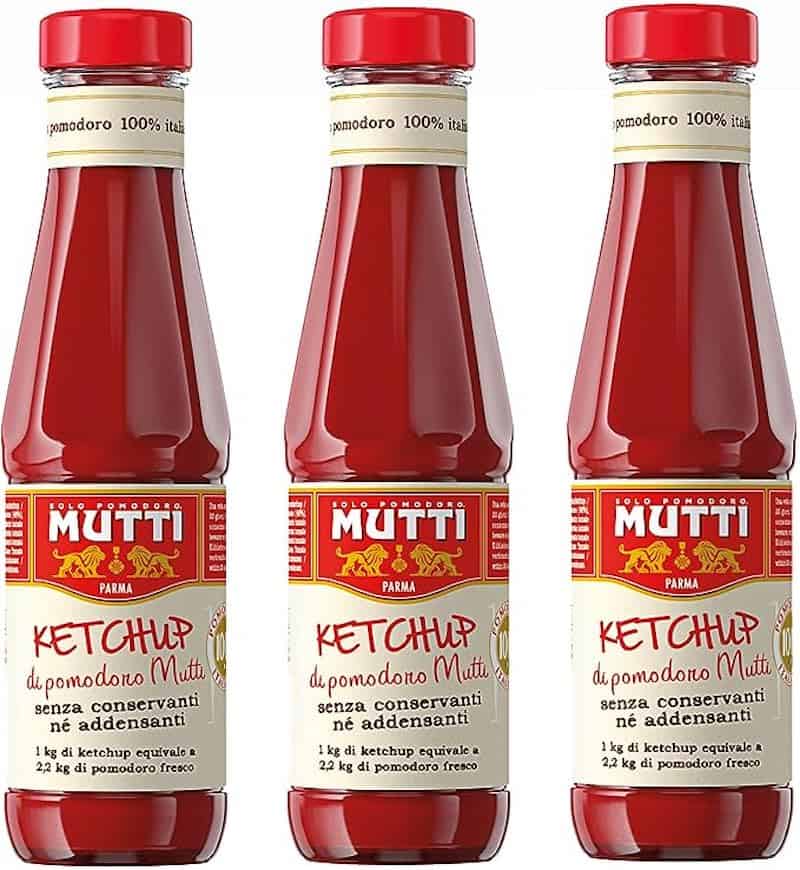
Italians don’t have an aversion to ketchup and are keen to use it on a hamburger or with French fries at a trattoria or informal restaurant. One survey suggests that ketchup is the most popular condiment in Italy after mayonnaise.
However, it would be considered very odd to request ketchup at a serious restaurant in Italy, even with a meat dish. Also, it would be offensive to ask for ketchup to “spice up” pasta or pizza (probably in the U.S. as well).
Although you might find some Heinz ketchup in Italy, Mutti is one of the most popular Italian ketchup brands.
Food Rule #24 – To say or not to say: Bon appetito!
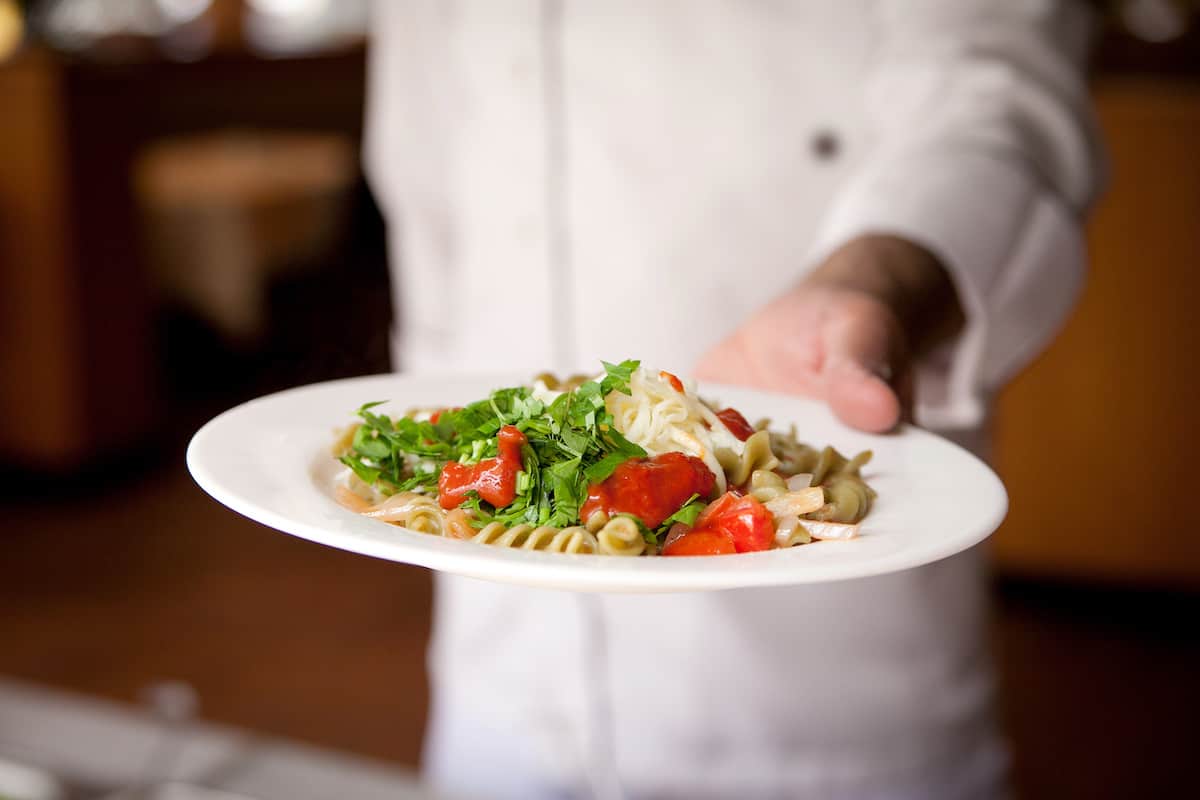
Although some say that this tradition that began in medieval times has become obsolete, visitors to Italy will find that it is still common to begin a meal by wishing everyone at the table Buon appetito before eating.
Your server might say Buon appetito at a restaurant after everyone has their starter.
This Italian phrase is the equivalent of the French Bon appétit and simply means “Enjoy your meal!”
A gracious way to respond is by saying Grazie (thank you).
Food Rule #25 – Doggie bag etiquette in Italy is evolving

Italians (and most Europeans) aren’t used to the large portions served in many American restaurants so it is less common for locals to ask for “doggie bags” (also spelled “doggy bags”) to take home leftovers after a meal.
However, Italians hate to waste food, and according to From Home to Rome, the practice of taking leftovers home became more acceptable after Italy passed a 2016 law against food waste.
Although asking for a doggie bag isn’t a typical Italian tradition, it isn’t poor etiquette to compliment the chef and ask if your waiter can wrap the unfinished portion of your meal to take home (Don’t call it a doggie bag or the meaning might get lost in translation.)
One catch: some restaurants may not have supplies for wrapping up your unfinished meal.
The most elegant solution to the dilemma, of course, is to not order more than you think you can eat.
Food Rule #26 – Don’t confuse a tip with a cover charge at restaurants

When you are dining at a restaurant or trattoria, you may find a per-person cover charge on the check when you get your bill.
While the rules of tipping in Italy are murky and only suggestions, a cover charge (coperta) is not a tip (mancia).
For more guidance on when and how much to tip, read my post on Tipping in Italy.
Food rule #27 – Eat Italian-style and savor every bite
Most times, most Italians eat slowly (except at busy lunch venues in large cities). Food and wine are integral parts of Italian culture as is the conviviality of breaking bread with friends and family.
Your server won’t mind you savoring every bite and eating slowly while you are dining.
AND NEVER FORGET…
When it comes to Italian food rules, as you can probably gather from those listed above, there are always some exceptions!
Even Italians are rule-breakers from time to time.
Gino Sorbillo, a well-known, third-generation pizzaiolo (pizza chef) in Naples recently shocked food purists by creating a pizza recipe with pineapple. Sorbillo told CNN that he hoped to “combat food prejudice” that precludes Italians from using non-traditional ingredients.
The line between prejudice and tradition is, indeed, a murky one.
Also on MoreTimeToTravel:
See my article on Forbes.com:
Save to Pinterest!
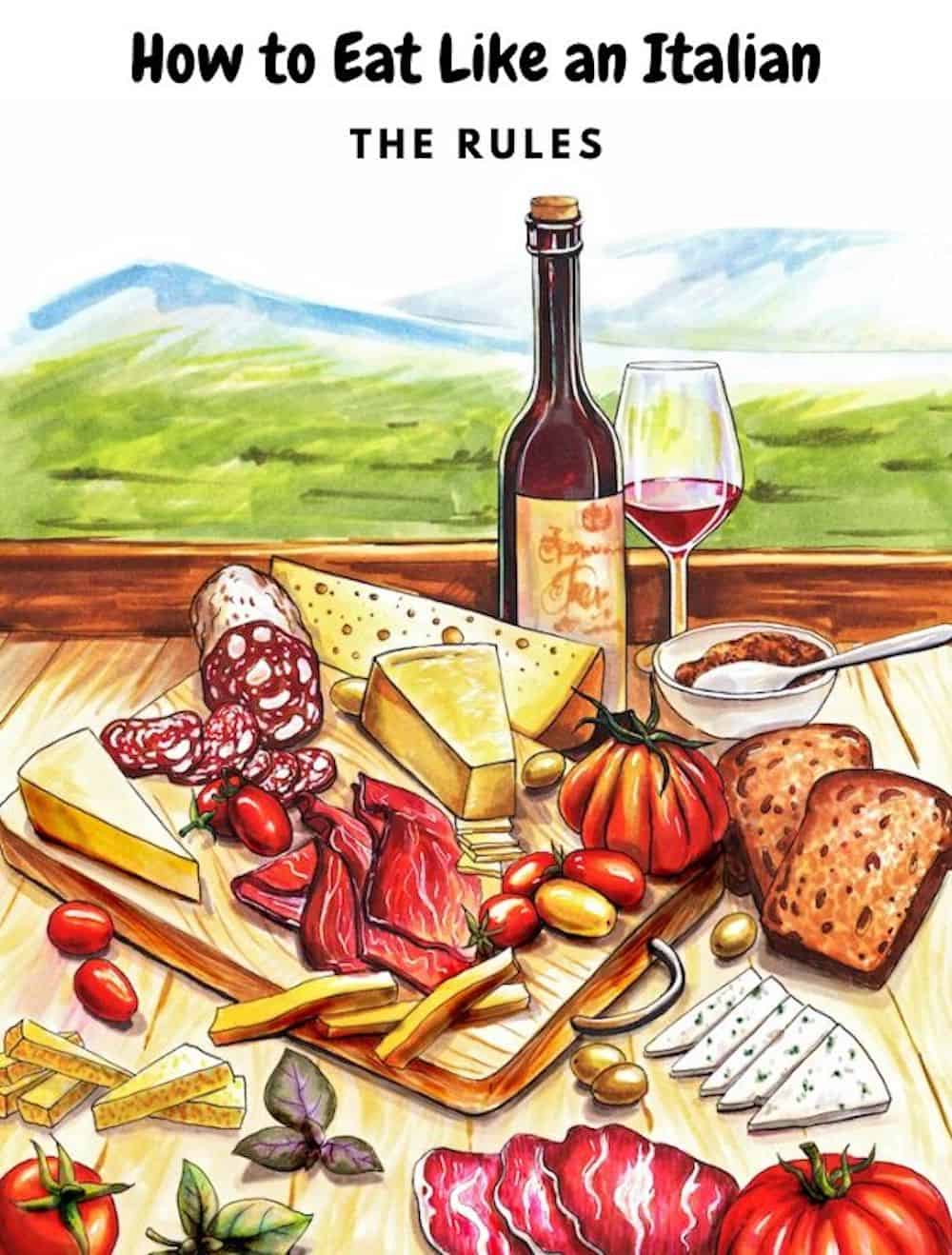

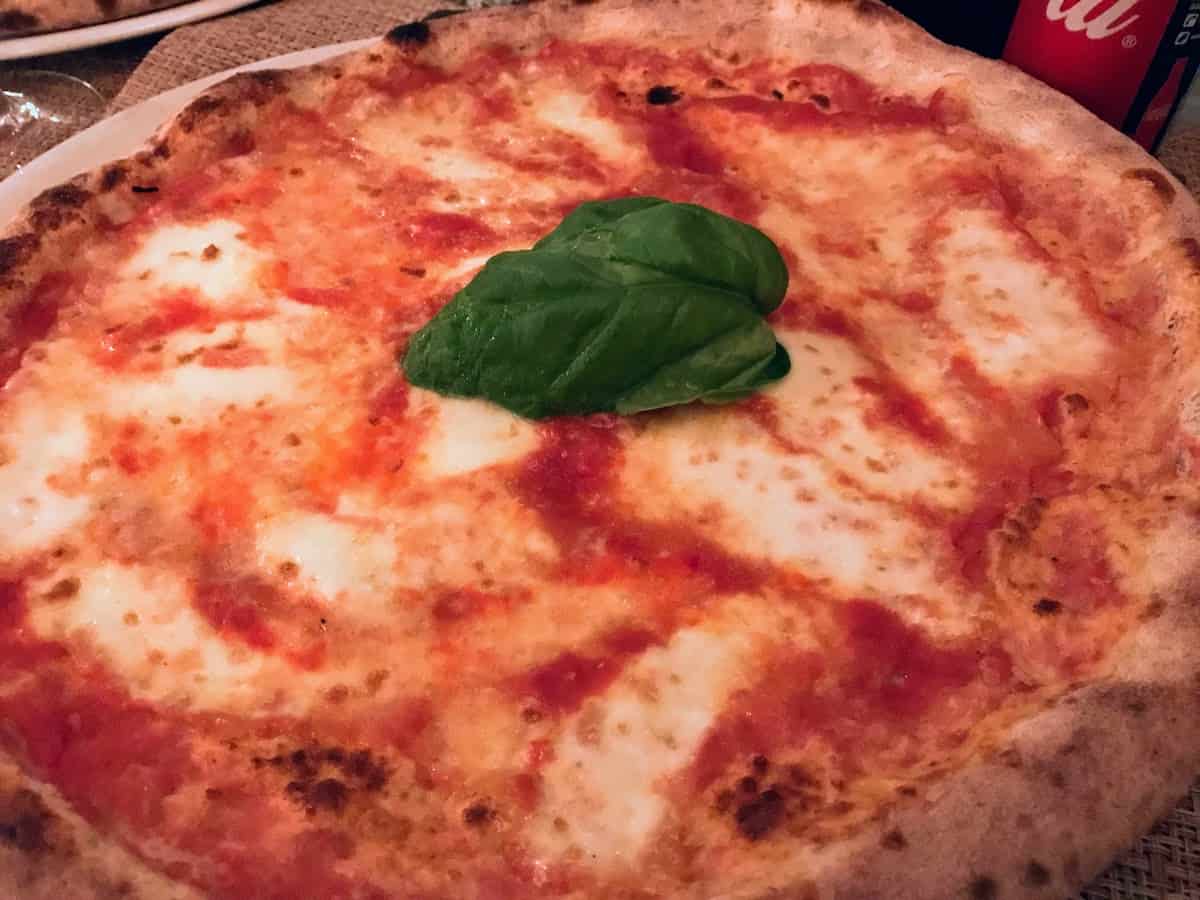

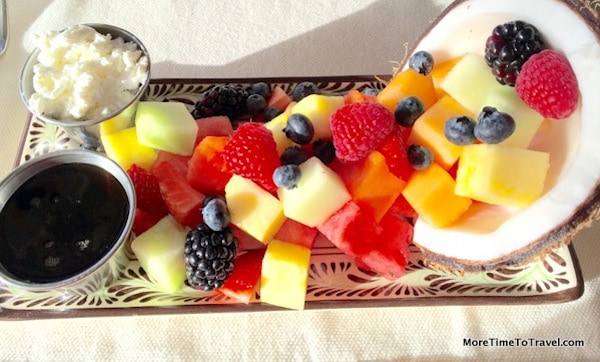


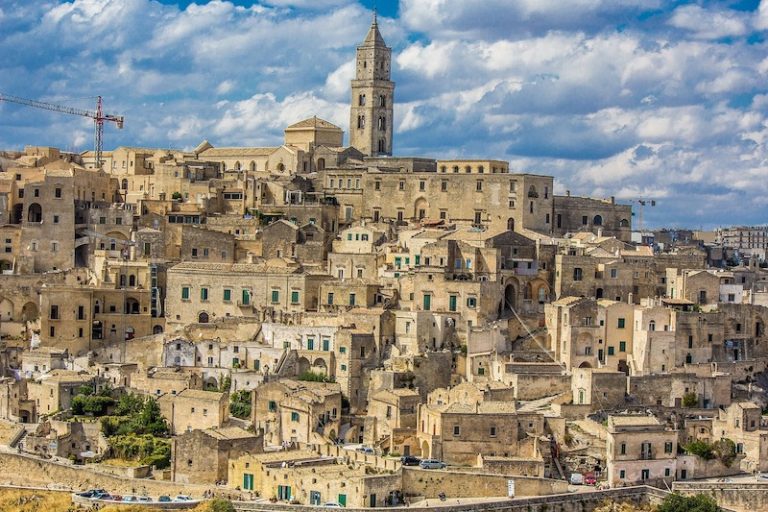

All true! Especially the one about cappuccino as a morning-only drink. No one seems to (or wants to) believe me.
Many Americans use a cappuccino-after-dinner as an easy way to skip dessert!
Well, aside from the soda pop, which I avoid, I have broken and will likely continue to break every rule you listed. I am amazed at the number of courses an Italian meal involves and I am usually done in by the pasta course . . .and yes, I will admit to having eaten cheese on fish pasta but then I eat cheese on anything and everything and sometimes alone. Loved this post! (It made me hungry. . .)
Somehow….I make it through all those courses:-)
Well, rules are made to be broken, right?! Now you have me craving Italian food!
Well, now you know the rules. Up to you about whether they are to be broken:-)
LOL! All true!!! We just returned from two weeks in Italy and loved each and every morsel. Thank you for the reminders!
The food and wines of Italy are pretty spectacular! Sounds like you had a great trip!
Thanks for sharing these 8 rules to follow when dining in Italy. So many of us are unaware of the Americanized changes that we find commonplace. These can be big faux-pas when visiting Italy.
I actually only ran into one “rule cop.” I ordered carpaccio as an appetizer, which I often do in the U.S. and he urged me to order it as a secondo. He said I could, of course, do whatever I wanted but I ordered a pasta dish instead:-)
I enjoyed your creativity with this post!! I did break rule #8 over and over again though. Diet Coke is my vice. 🙂
I’m pretty addicted to Diet Coke myself but it is usually more expensive than a glass of wine in Italy so I always opt for the latter!
Well, I’ve broken a lot of these rules, but never the one about ordering pop! I’d never drink pop with Italian food, and rarely with any food. I have, though, been guilty of having grated parmesan cheese on my pasta with clams. Thx for sharing these Italian food rules with us.
It was fun to brainstorm and compile the list!
This is great. As frequent travelers to Italy our first mistake was ordering a Cappuccino in mid-afternoon. I can’t stop smiling while reading this. Love the article and all true.
Glad you enjoyed it!
Wow! So much I didn’t know. What an interesting (and useful) list. (No cheese with fish –there’s a mistake I’m sure I’ve made!) I wonder if any of these vary depending where you are in Italy or are they pretty much a given across the country?
They probably vary from home to home:-) but these are general rules across the regions!
I was nodding my head for the most part as l read this :-). My husband is Roman and he abides by these mostly. I’m proud to say l am the cause because one in a while, I want an extra cappuccino when he has a “cortado” in the afternoon. I also found it hard to eat salad last like they do as opposed to how we eat it at the beginning but l am getting used to it. His mom has given up trying to make me do it their way..haha! .
Sounds like you’re an almost convert!:-)
Somehow, I can’t follow the no-cheese rule…
And don’t use a spoon against your fork when twirling your spaghetti!
Although my grandparents came to America as toddlers and went to American schools, their parents instilled in them all of those rules. We never had salad before dinner. We had soup or antipasti as a primo & never had meat mixed in with the pasta. The pasta was in one bowl & the meat in another. The meat was cooked in the sauce but never just dumped on the pasta.
Thanks for sharing your family story!
Great article and very atmospheric pictures, thanks!!
There was a restaurant across the street from our hotel in the center of Florence that catered to American tourists (most of whom seemed to be college age), and it served huge pizzas that were mean to be shared. The waiter would not speak Italian to me (even though I am reasonably fluent), and he also served us some bread with fake Balsamic vinegar, which I believe was made with molasses. I pointed this out to him, and he told me that Americans loved it.
The food was otherwise good, but it was definitely Americanized, and so you can definitely find Italian-American dishes in Italy, but I tried to avoid them.
Sounds like the kind of place that might serve Hawaiian pizza!:-)
GREAT Article ❗️Thank You FOR SHARING 👍🏼♥️Yum😋 G-d♥️Bless
Glad you enjoyed it! It was fun to put together~
Well not all are accurate
You can use a fork against the spoon to wind spaghetti or fettuccine
and when you finish a pasta dish you can use bread to mop up the remaining sauce
using a fork. Keep it classy 😂
It even has a name “ la Scarpetta “
Some of the “rules” are debatable and vary from place to place. Thanks for your thoughts!
You forgot one. Eat french fries with a fork.
Not sure of that one. What makes you say that?